I.Introduction
Looking to take your WordPress website to the next level in terms of tracking and analytics? Adding Google Analytics GA4 to your WordPress site is the key. In today’s competitive online landscape, understanding user behavior, monitoring performance, and optimizing your content strategy are paramount. This comprehensive guide will walk you through the process of seamlessly integrating Google Analytics GA4 into your WordPress website. Whether you’re a seasoned webmaster, an aspiring blogger, or a digital marketer striving for data-driven insights, mastering the integration of Google Analytics into WordPress is essential for maximizing your online presence. Let’s dive into how you can effortlessly add Google Analytics GA4 to your WordPress site and unlock its full potential.
What is Google Analytics (GA4) ?
Google Analytics 4 is the newest iteration, rendering universal analytics obsolete as of July 1, 2023. It has become imperative to transition from universal analytics to GA4 to continue accurately measuring website traffic.
In this comprehensive guide, we will delve into the intricacies of adding and installing Google Analytics (GA4) on your WordPress website. From deciphering user demographics to analyzing visitor interactions, GA4 provides a wealth of data crucial for making informed decisions. Join us on this exploration, as we break down the process into actionable steps, empowering you to harness the full potential of Google Analytics for elevating your online presence.
We’ll cover four distinct methods to seamlessly integrate GA4 with your WordPress site, ensuring you stay at the forefront of website analytics. Let’s embark on a journey of unraveling the mysteries behind website analytics and optimizing your WordPress site for success.
II. Understanding Google Analytics 4 (GA4)
Google Analytics 4 (GA4) represents a significant evolution in web analytics, introducing advanced features that cater to the dynamic needs of the digital landscape. In this section, we delve into the core aspects of GA4, shedding light on its features, benefits, and the pivotal shift from universal analytics.
1. Exploring the Features and Benefits of GA4:
GA4 is designed to offer a more comprehensive and user-centric approach to analytics. It goes beyond traditional metrics, providing a holistic view of user interactions with your website. Key features include:
- Event-Driven Tracking: GA4 focuses on user interactions as events, offering a more flexible and customizable tracking system.
- Enhanced User Journey Analysis: GA4 emphasizes the user journey across devices, making it easier to understand how users engage with your content over time.
- AI-Driven Insights: The integration of machine learning enables GA4 to deliver predictive metrics and valuable insights for better decision-making.
- Understanding the Discontinuation of Universal Analytics and the Need for an Update:
With the landscape of online user behavior constantly evolving, Google has decided to retire Universal Analytics as of July 1, 2023. This transition underscores the necessity for website owners to update their analytics setup to GA4. The move aligns with Google’s commitment to providing a more intelligent, user-centric analytics solution. - Significance of GA4 in Providing Actionable Insights:
GA4 isn’t just an update; it’s a leap forward in analytics capabilities. It offers actionable insights that empower website owners and digital marketers in various ways: - User Behavior Analysis: GA4’s event tracking allows for a detailed understanding of how users interact with specific elements on your website.
- Demographic Insights: The platform provides deeper demographic data, helping tailor content and strategies based on the characteristics of your audience.
- Advanced Traffic Source Analysis: GA4 enhances the attribution model, offering a clearer picture of where your traffic originates and how users navigate through various channels.
Understanding GA4 is not merely adapting to change; it’s embracing a tool that provides richer, more nuanced insights into user interactions, enabling website owners to make informed decisions and stay ahead in the competitive online landscape.
III Add GA4 to WordPress
Step 1: Go to Your Google Analytics Account
Begin the process by heading to the Google Analytics homepage and logging in with your Google account. This grants you access to your dashboard, allowing us to proceed further.
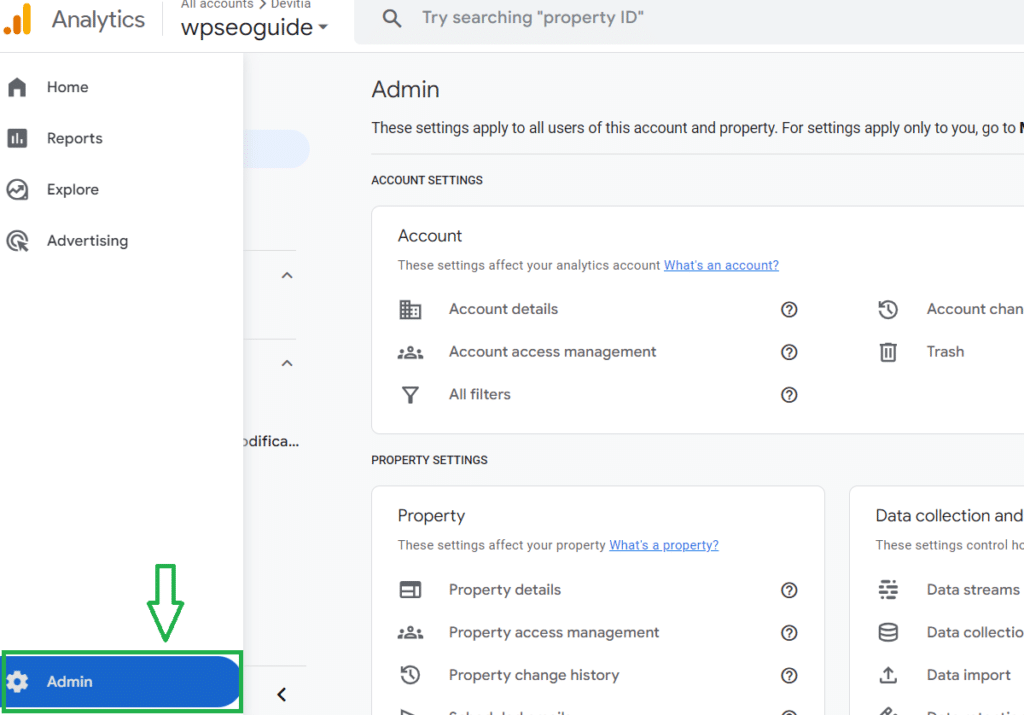
Once you’ve entered your Analytics dashboard, your next step is to establish a new GA4 property. You can achieve this by choosing Admin > Create Account or by selecting an existing account to set up your new property.
Given the assumption that you already possess a Google Analytics account for this tutorial, we will proceed by clicking on “Create Property” within an existing account.
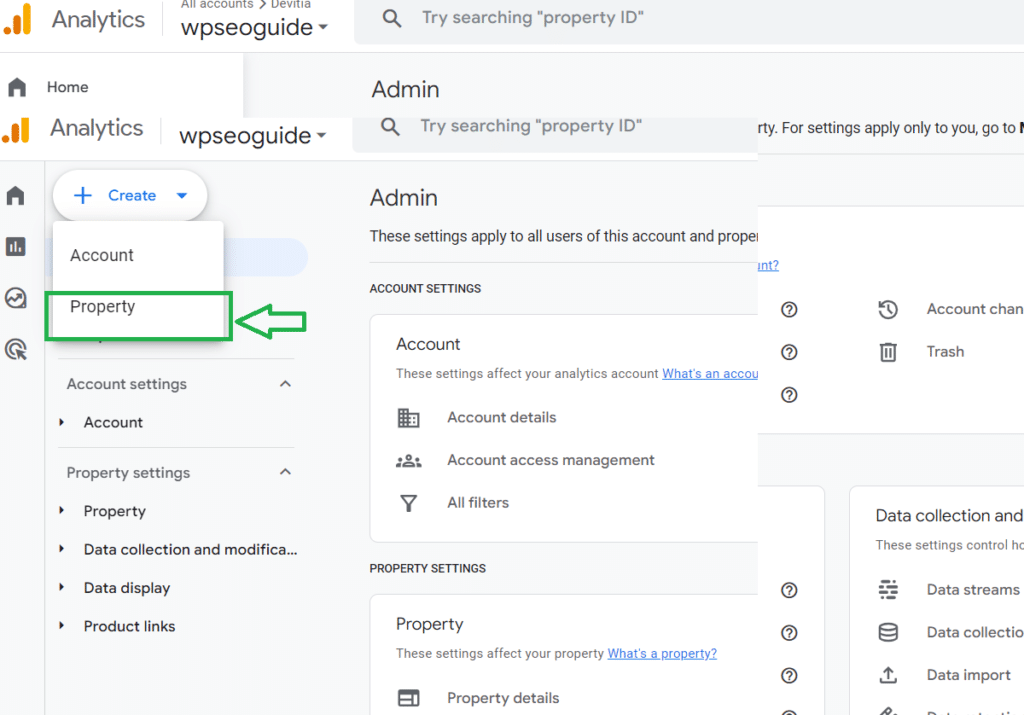
Next, you’ll encounter the property setup screen, where you can select the reporting time zone, currency, and provide a name. Simply input the required information and proceed by clicking “Next”.
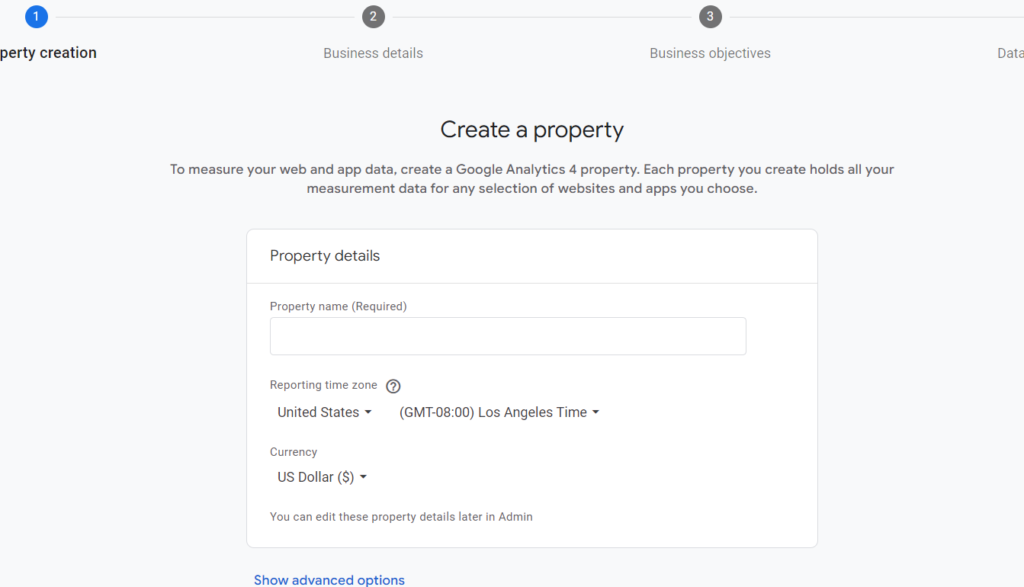
Following that, a Business details form will appear, prompting you to choose your industry category, business size, and your intention to use Google Analytics.
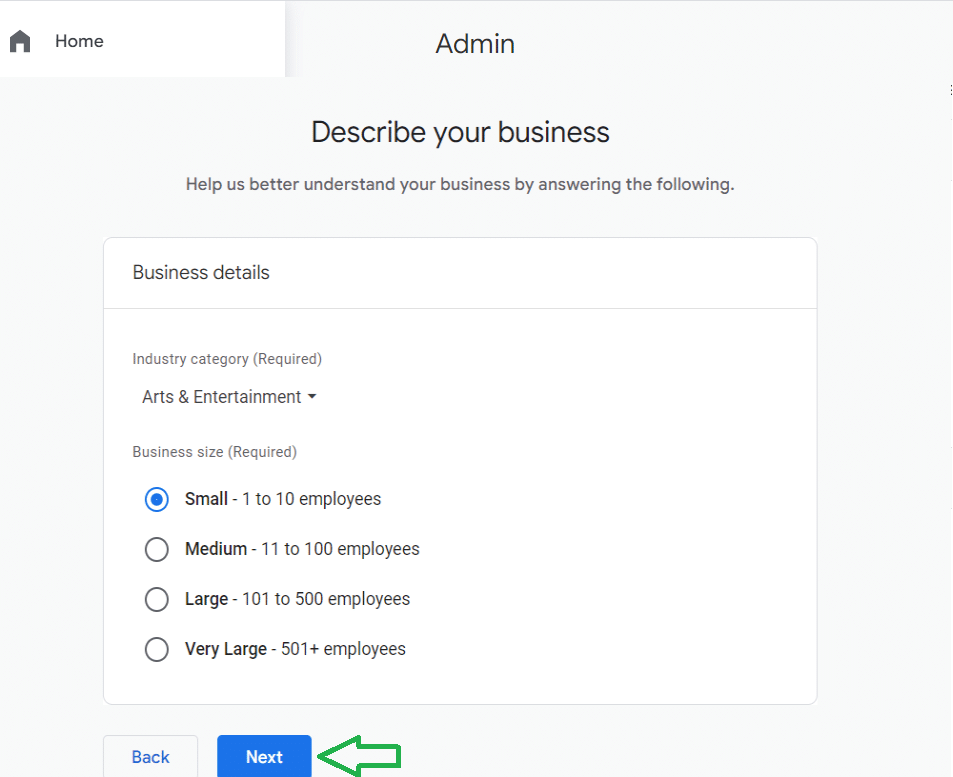
Now choose your Business objective and then click create
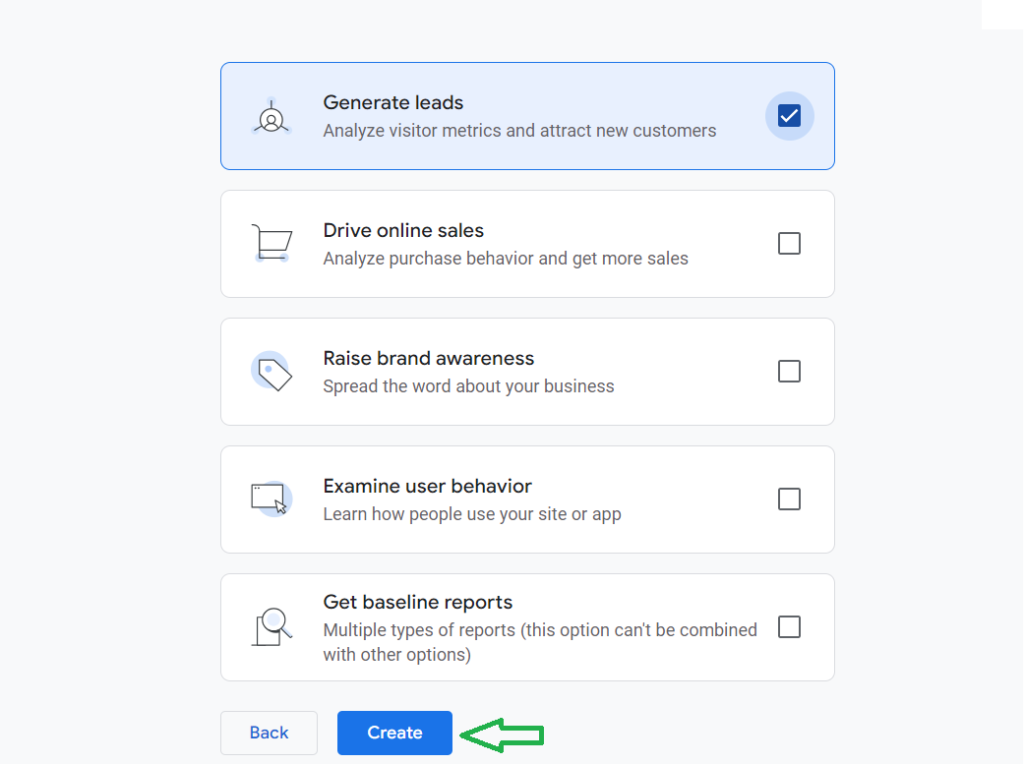
Once you click the Create button ,a popup message will appear confirming the successful creation of the property.
Now, you’ll be directed to the “Data Streams” page. Here, you’ll find three distinct options: iOS App, Android App, and Web. Opt for “Web.”
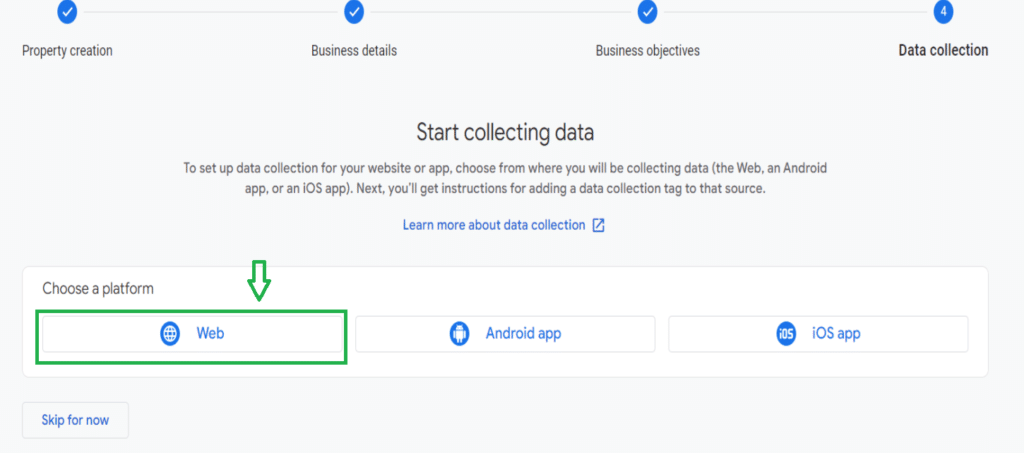
Initiate the data stream setup by entering your Website URL and Stream name, followed by clicking the “Create Stream” button.
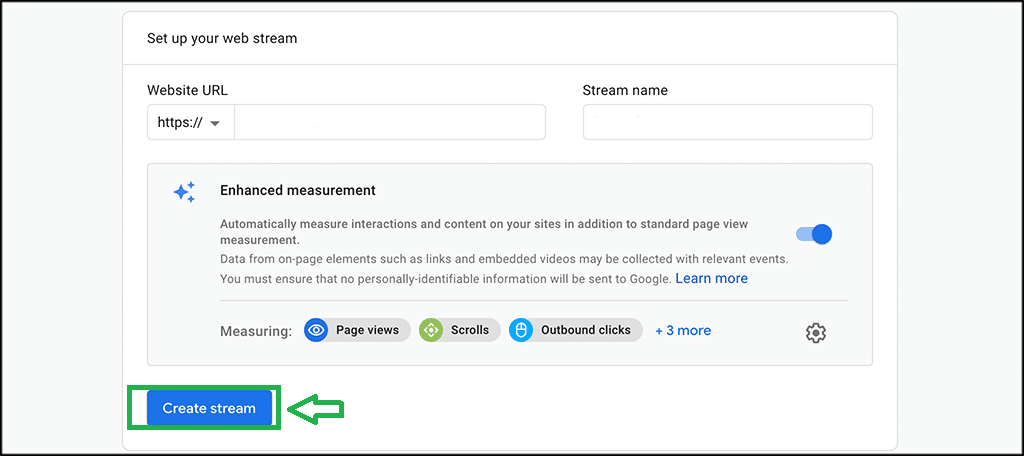
Upon reaching the Web Stream Details screen, it will indicate the successful creation of the web stream. However, data collection is not yet integrated and active. This signals that you need to install Google Tag on your WordPress site.
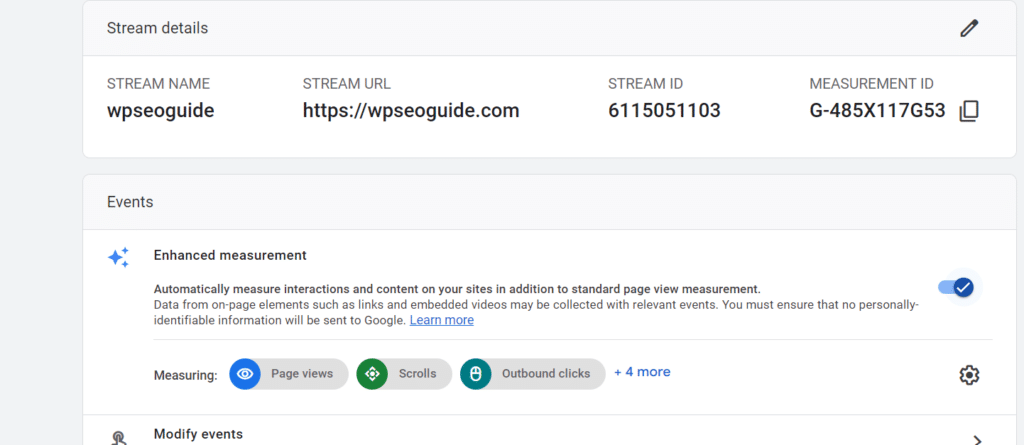
Step 2: Install Tracking Code on Your WordPress Website
Click the View Tag Instructions button,

You’ll see two ways to add the tag:
1) Install with a website builder or CMS.
2) Install manually.
You will have all the instructions to follow for installing GA4 on your WordPress website.
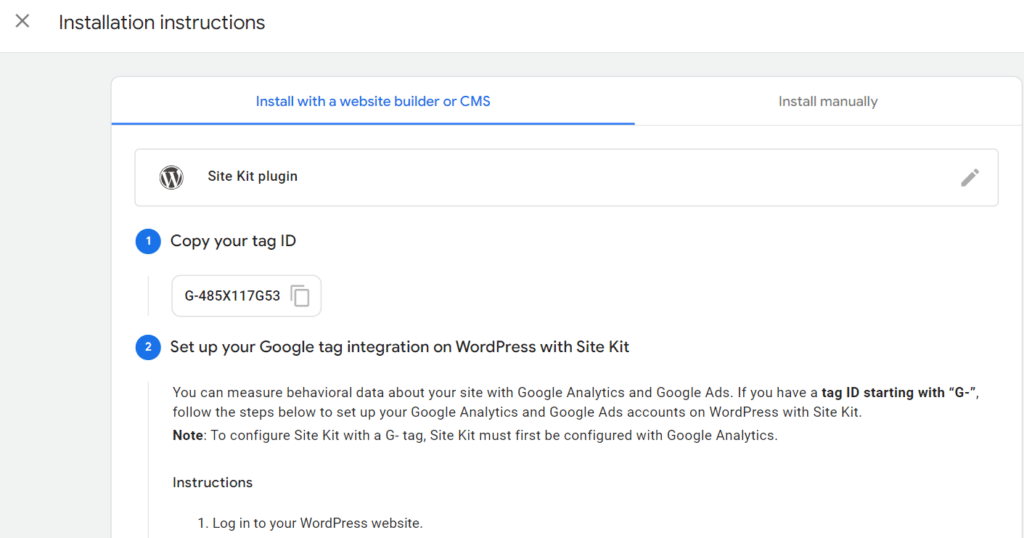
When you add the tag to your website, Google will track the data to your Analytics dashboard.
Closing Thoughts:
The Google Analytics 4 update represents a significant change that can positively impact the lives of marketers in various ways. This update empowers you to choose when and how to leverage customer data for optimizing ads, while also providing the option to restrict data use solely for measurement purposes.

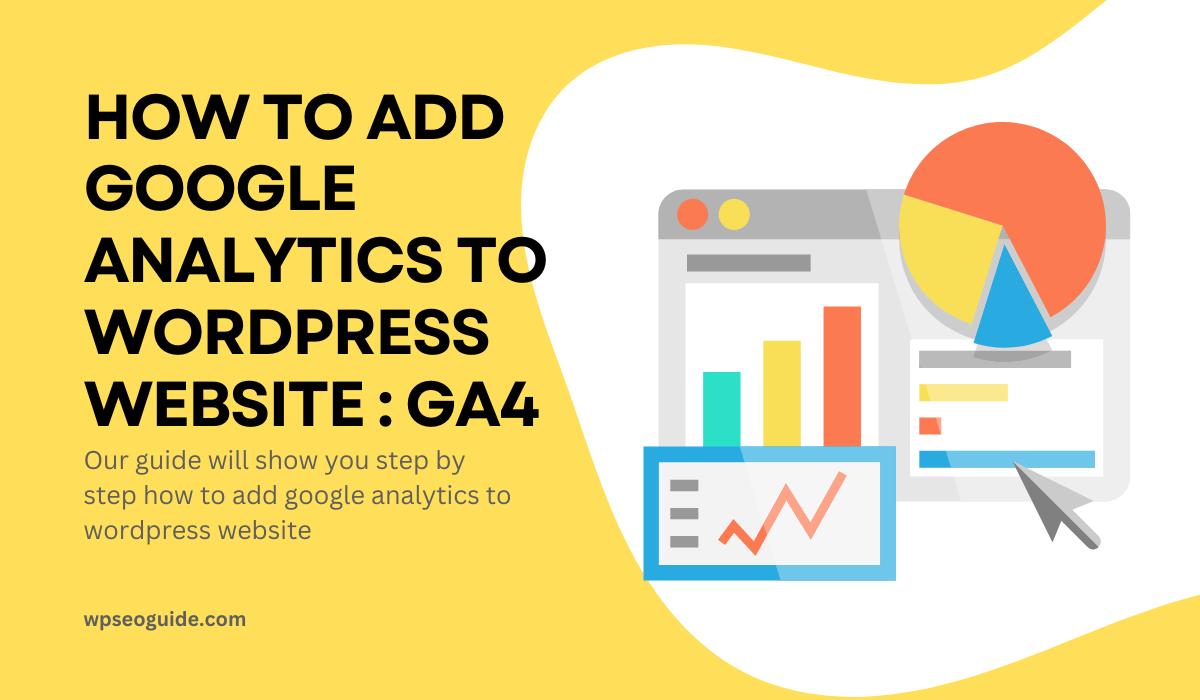


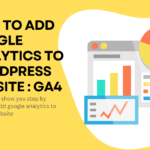

[…] need to create a Google Analytics account and add a tracking code to your site. You can follow this tutoriel to easily add the tracking code to your […]
[…] Google Analytics and Search Console: Google Analytics and Search Console are essential tools for monitoring your SEO performance. They provide insights into your traffic sources, user behavior, and site health. Set them up early to start collecting valuable data. For a step-by-step guide, check out our article on how to add your blog to the google analytics.” […]
[…] Google Analytics: Check your organic traffic to see how well your long-tail keywords are attracting visitors. Look at metrics like bounce rate, average session duration, and pages per session to gauge user engagement. Discover how to add your website to google analytics […]
[…] Google Analytics: Track your site’s traffic, understand user behavior, and measure conversions. Read more about how to add google analytics to your website […]
[…] Tracking the performance of your titles helps you understand what works and what doesn’t. Tools like Google Analytics, [Ahrefs](https://ahrefs.com/), or SEMrush can provide insights into CTR, traffic, and engagement metrics. Analyzing this data enables you to make informed decisions and refine your title creation strategy. Read more about google analytics and how to add google analytics to your wordpress website […]
[…] Google Analytics: Track user behavior, bounce rates, and conversion rates to measure content performance. Read about How To add Google Analytics to WordPress Website : GA4 […]